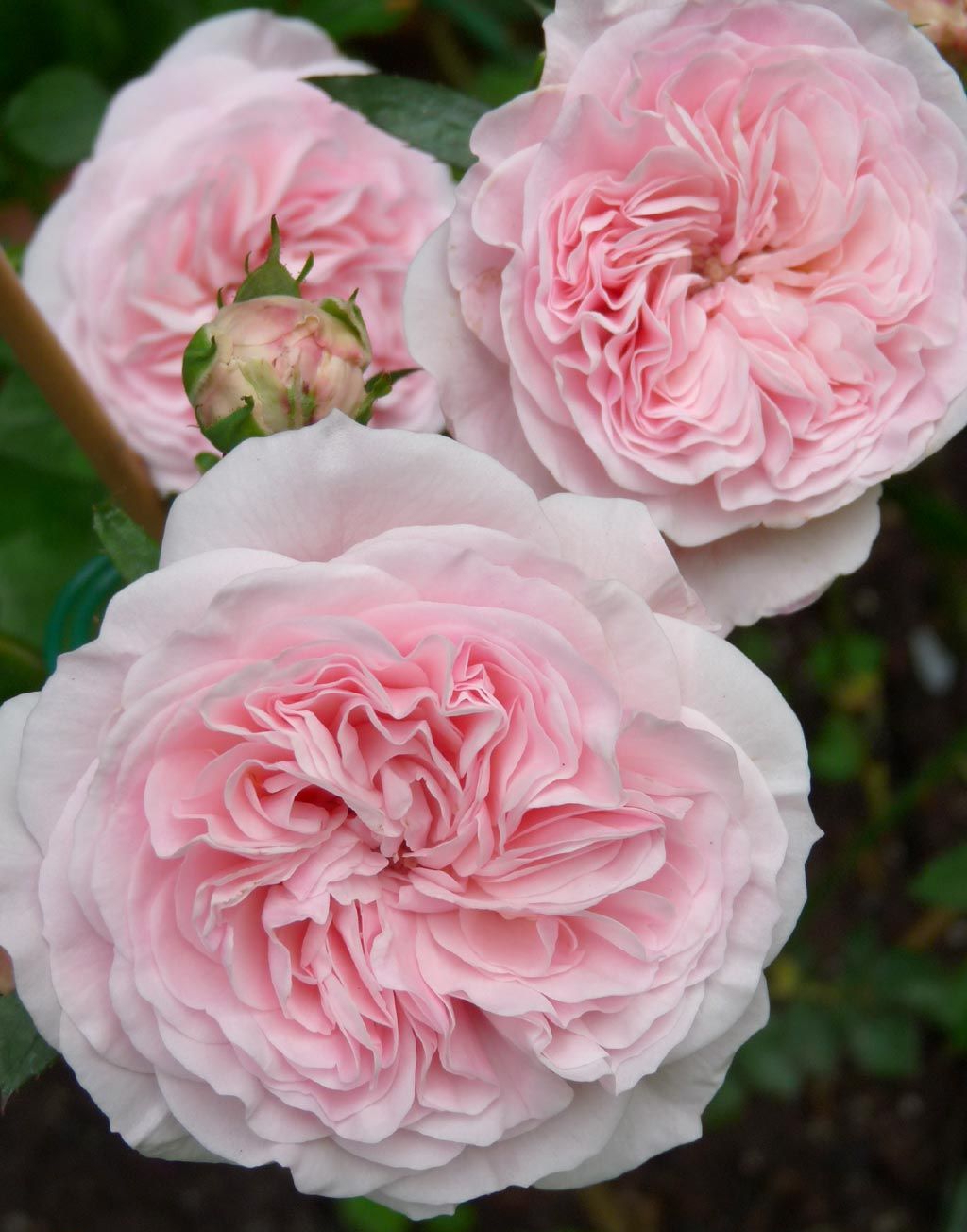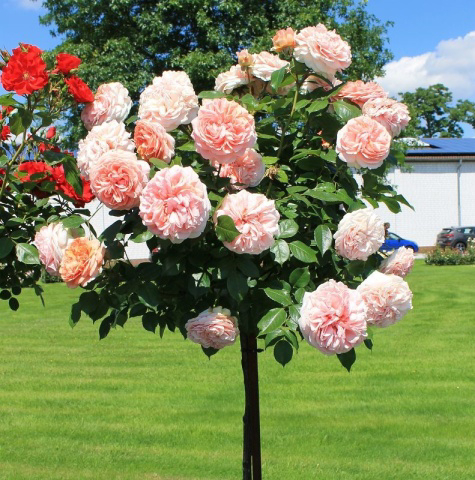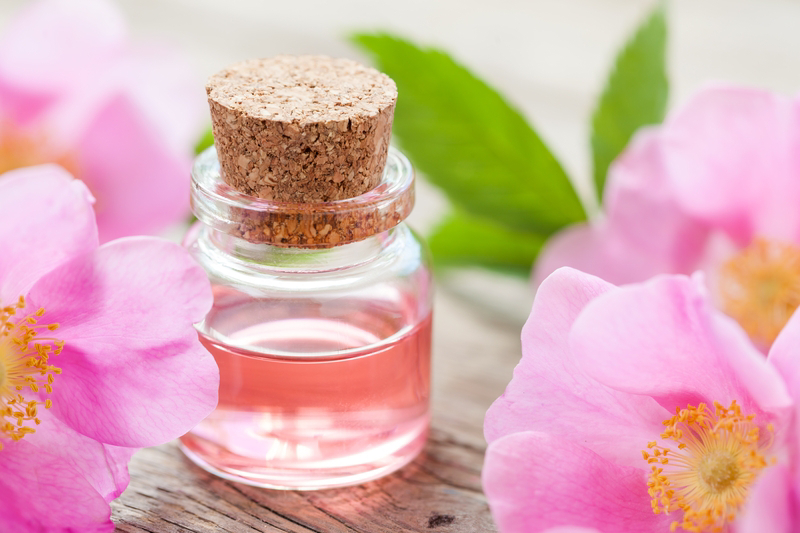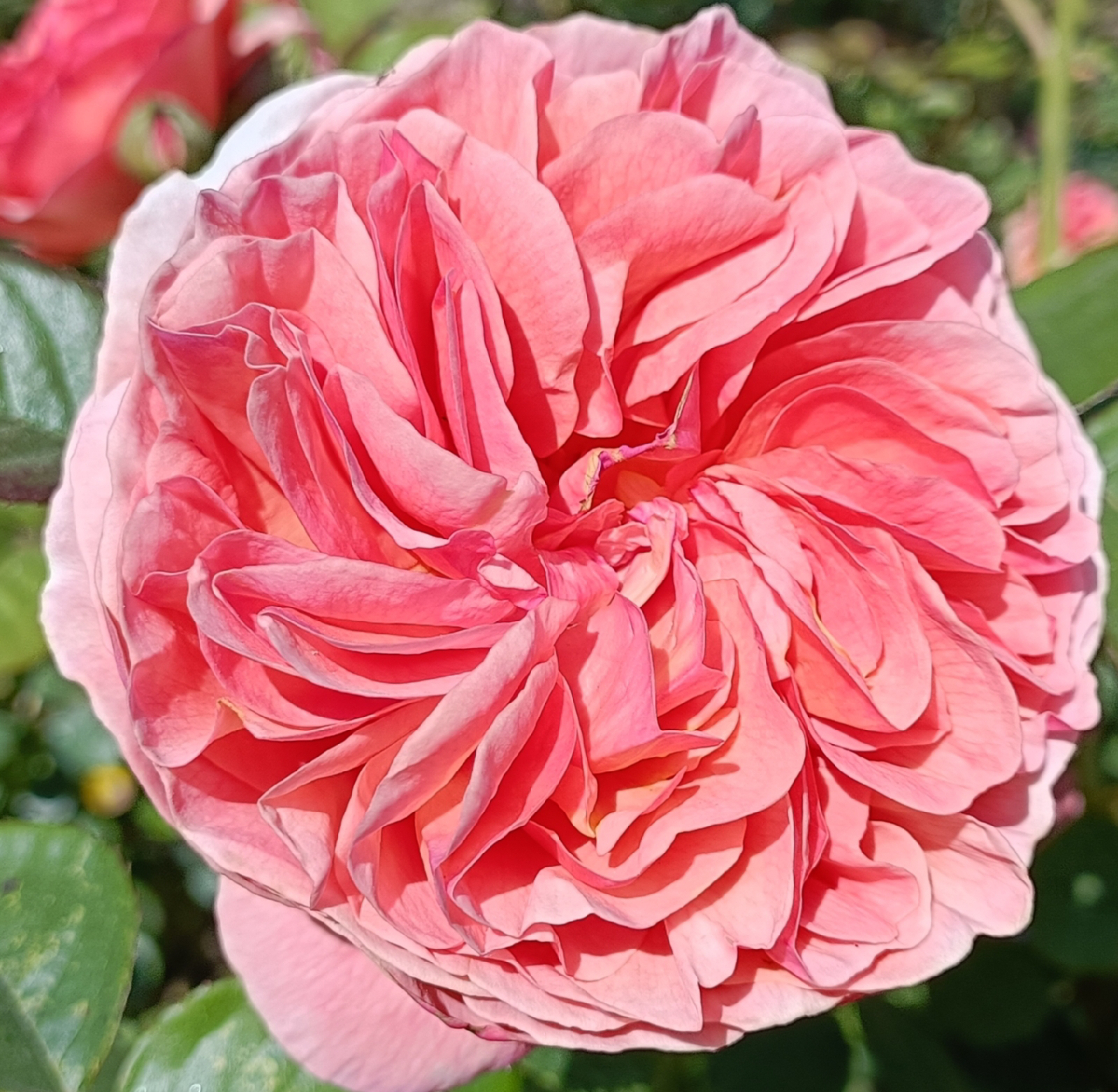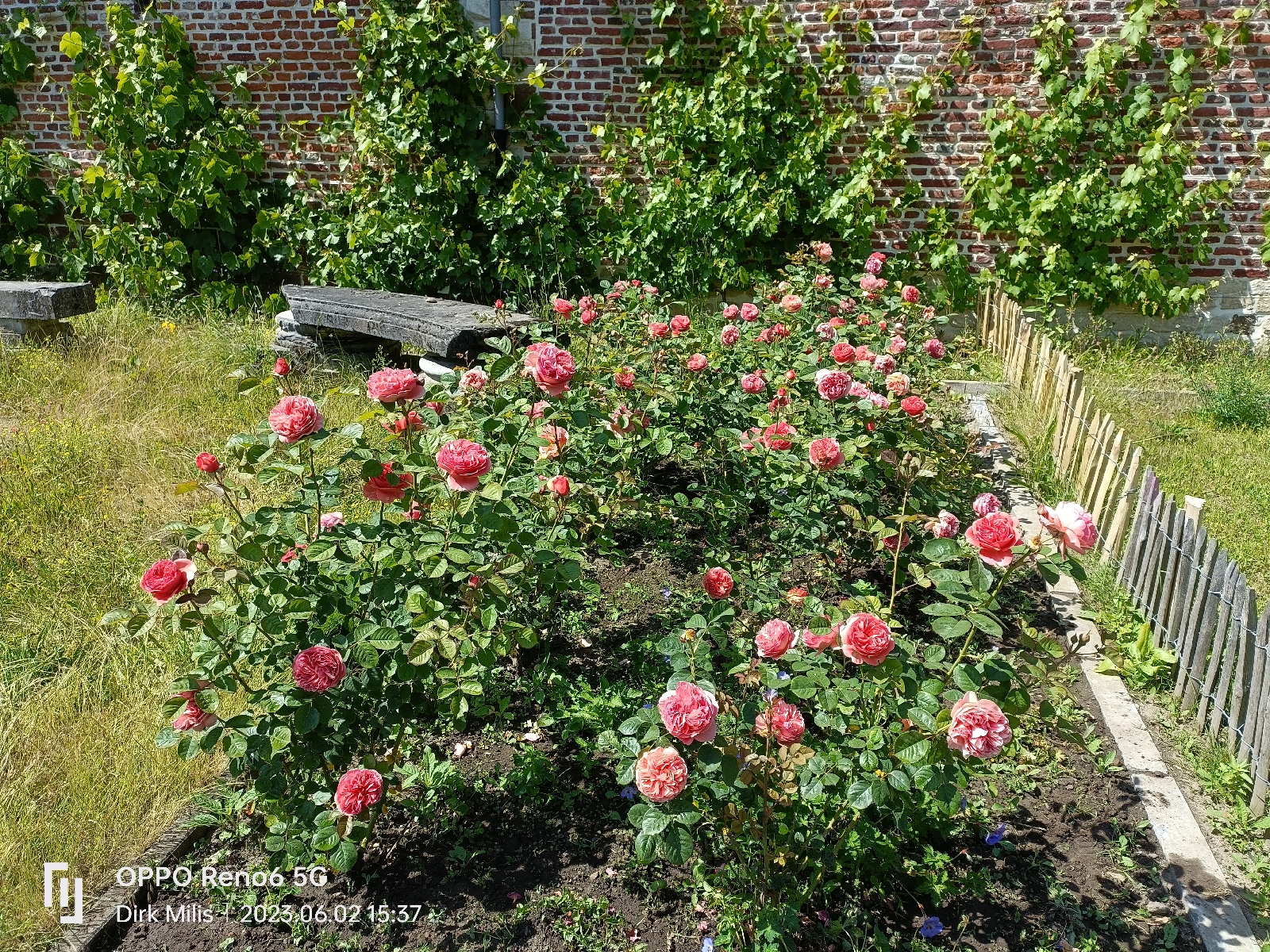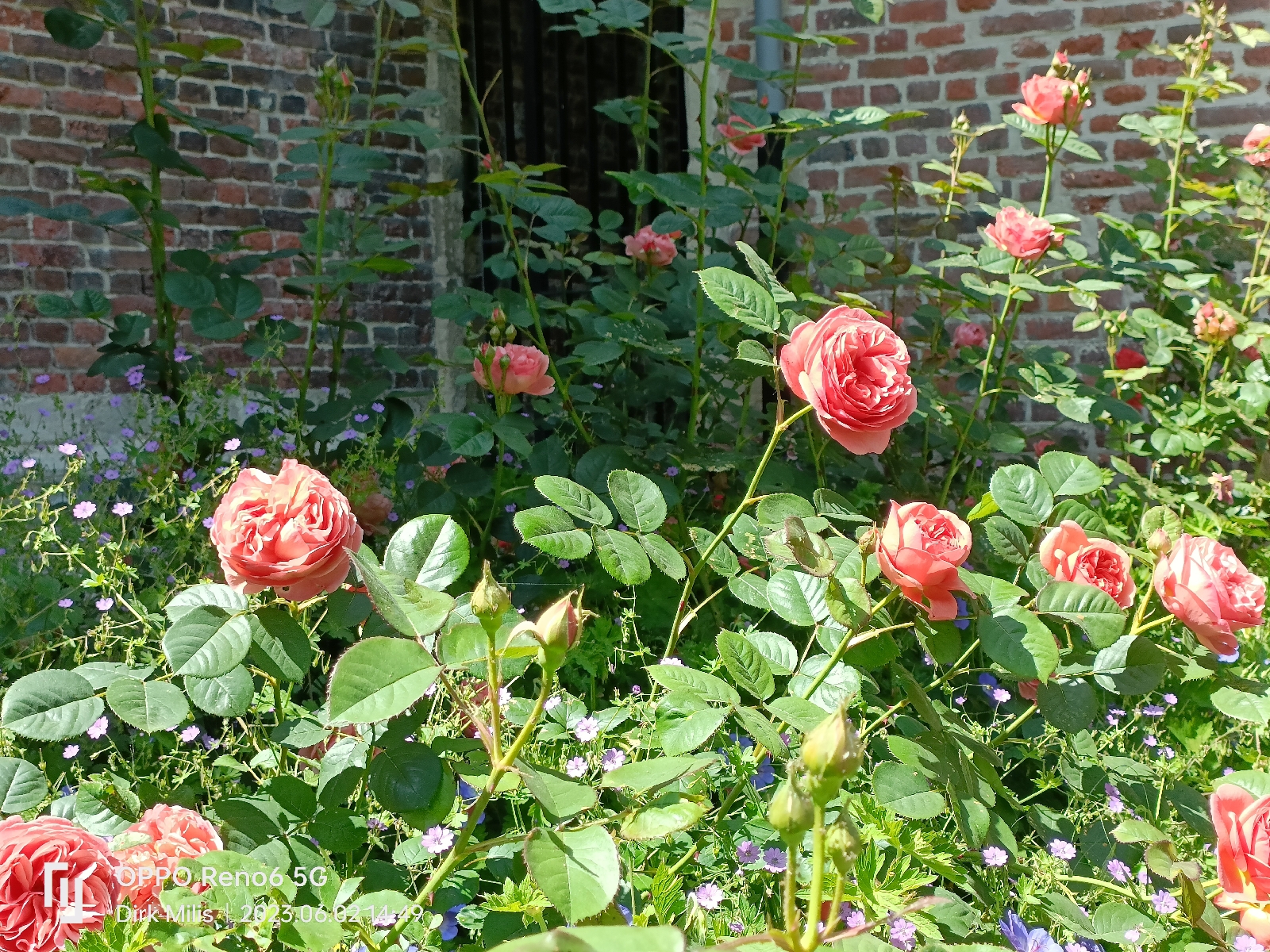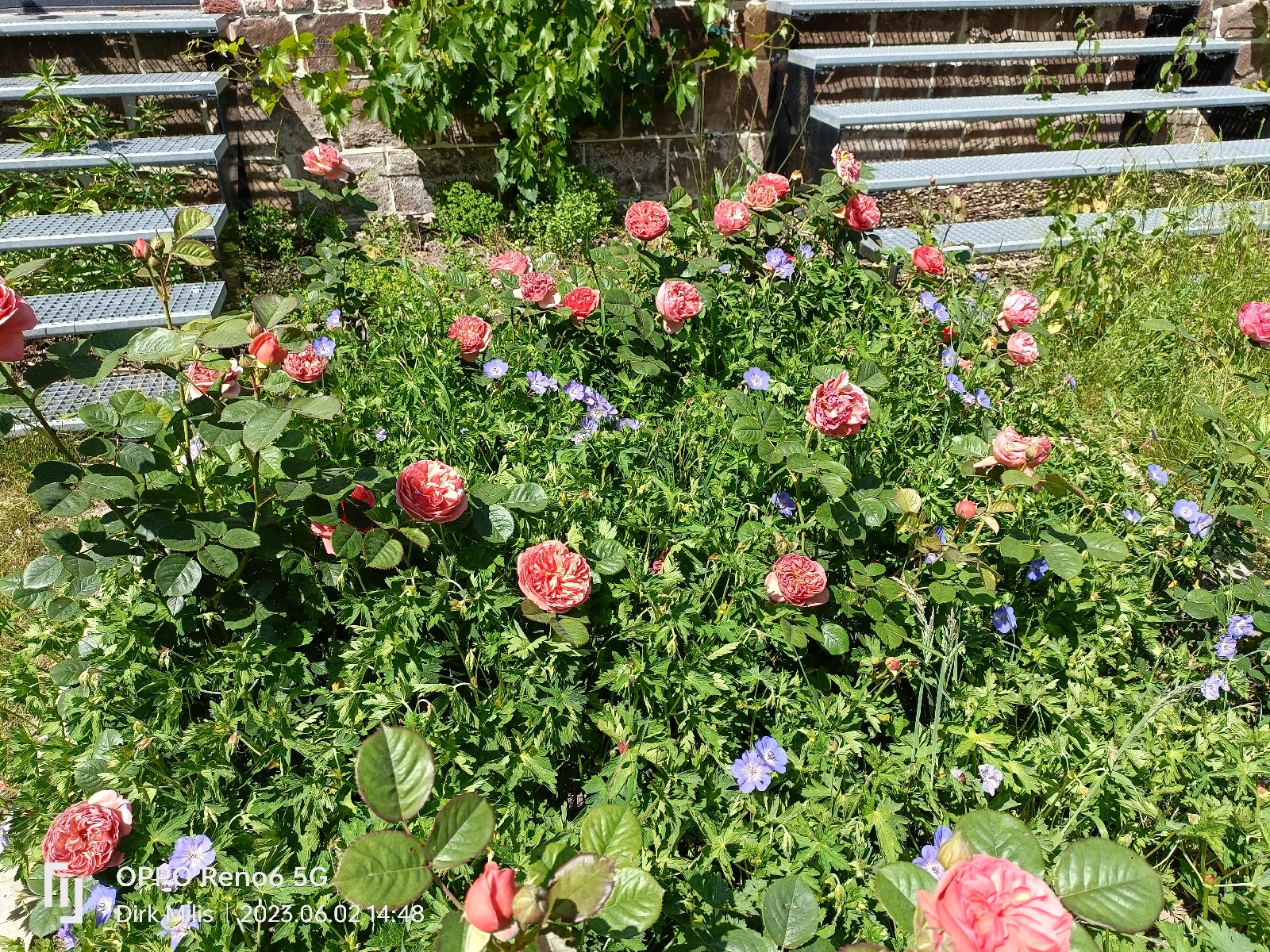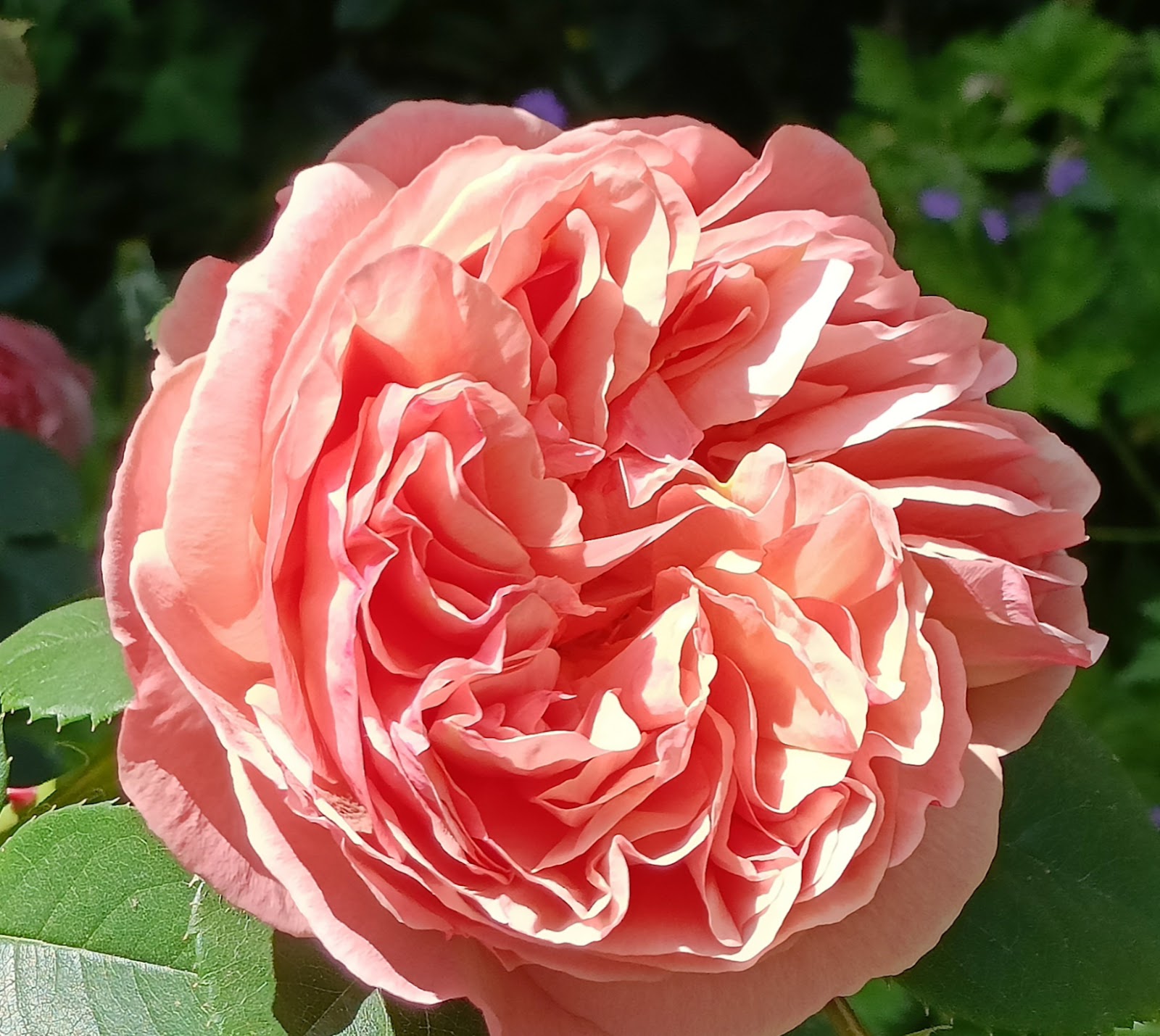What can cause this? And how do we solve this problem?
One of the problems is that the soil near the wall is often very poor due to debris like stones, lots of sand etc...
Second major problem is the sucking power of brick walls. Brick walls act like a big sponge, they suck up the water from the soil close to the wall and evaporate it through the bricks themselves. Especially in late spring and summer when those walls catch lots of sunshine, they warm up and evaporate liters and liters, gallons and gallons of water from the soil. For young roses planted close to the wall this can be a death sentence. It's unbelievable how quickly the soil dries out in summer close to a wall. Even if you water the rose once a week it isn't enough. You need to water it daily during hot days or she definitely will die.
There is however a way to get around this. If you have a hot wall and you want to plant climbers against it this is what you must do:
Don't plant the rose directly against the wall but plant it 60 cm or two feet away from the wall. Make a spacious hole and mix compost through the soil, this will increase the water retaining capacity. Plant the rose in an angle towards the wall, let's say at 02.00 o'clock. Mulch with a thick layer of compost. Now you take a small climbing trellis of approx 4X2 feet or 120X60 cm. Stick it behind the rose and let it rest against the wall so now you have the ideal support for the rose to get to the wall.
If you wanna be completely sure your rose will get enough moisture you can bury a piece of drainpipe right next to the rose's roots. Now you can water your rose via this pipe sticking out of the soil and the water will definitely go to the roots.
I recommend using container roses for walls. They already have more roots and can cope better with starting problems.
With these tips your climbers will definitely take off soon. Don't forget to water them almost daily in summer the first year.
This piece of climbing trellis is ideal for making a bridge to the wall so your climber can access it easily without getting planted right next to the wall

